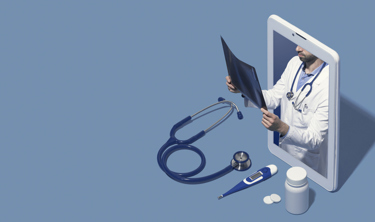What To Know Before Deploying Mobile Devices For Virtual Care And Remote Visitation
By Wes Wright, Imprivata

Many healthcare organizations use mobile devices in both inpatient and outpatient settings to improve care quality, maximize the effectiveness of provider workforces, and enhance the patient experience. However, deploying devices during the COVID-19 pandemic presents a unique set of security and device management challenges.
If you want to provide care remotely and keep patients and your healthcare workforce safe, be sure to give some thought to these key IT questions:
- How will the devices be digitally, not physically, sanitized? To ensure patient privacy, IT teams need to develop a standardized process for wiping devices and installing/reinstalling applications between patients. Digital sanitation can be achieved through a completely automated process. Alternatively, IT teams can establish a detailed checklist so staff can wipe devices and reinstall apps manually.
Note: Some healthcare organizations are welcoming donations of mobile devices. In those cases, you need to make sure there’s a digital sanitization process in place—and if it’s an iPad, make sure the donor has deactivated the lock on each device or you won’t even be able to sanitize it!
- How will you teach staff and patients to use the devices? Staff, patients, and patients' families will need to learn the basics about how to use the shared devices and apps. There is a range of options for these types of tutorials, running the gamut from websites and email templates to physical handouts, which can be distributed in waiting rooms.
- Which applications will be loaded? Consult with providers to determine which apps are needed most. For patients, select those that are no cost, easy to use, and OS agnostic. For telehealth initiatives, it will be easiest and quickest to stick with apps that are already familiar to healthcare staff. And I don’t see any reason you can’t let your patients download any consumer apps they might want to use; after all, the device will get sanitized when they’re finished.
- What can be done to reduce the manual burdens for IT staff and clinicians? Provisioning, wiping, updating, and managing shared devices can be labor-intensive if done manually. As with patients, it is important to remove manual touches by others whenever possible. Cloud-based automation software can be used to provision shared mobile devices to expedite device processing and reduce the manual burdens for IT staff and clinicians. With these software solutions, a staff member can quickly and automatically complete a full factory reset and reload apps on a shared device once the patient who was using the device is discharged.
Your organization didn’t hire clinicians to be IT support folks, so I’d avoid bringing them into this process as much as possible. Our clinicians are too busy doing other stuff right now.
Some thought around these points before your deployment should allow your healthcare system—using mobile devices—to keep your patients and family in touch with each other, maximize the effectiveness of your provider workforce, and enhance the ability of clinicians to continue to provide care remotely while working to keep you patients and healthcare workforce safe.
If you take nothing else away from this take this: your clinicians are busy saving lives, they shouldn’t have to play IT support for either patients or provider staff—your job is, to the extent possible, to not ask them to do so.
About The Author
Wes Wright is the Chief Technology Officer at Imprivata. Wes brings more than 20 years of experience with healthcare providers, IT leadership, and security.
Before joining Imprivata, Wes was the CTO at Sutter Health, where he was responsible for technical services strategies and operational activities for the 26-hospital system. Wes has been the CIO at Seattle Children’s Hospital and has served as the Chief of Staff for a three-star general in the U.S. Air Force.
Wes holds a B.S. in Business and Management from the University of Maryland and received his MBA from The University of New Mexico.
